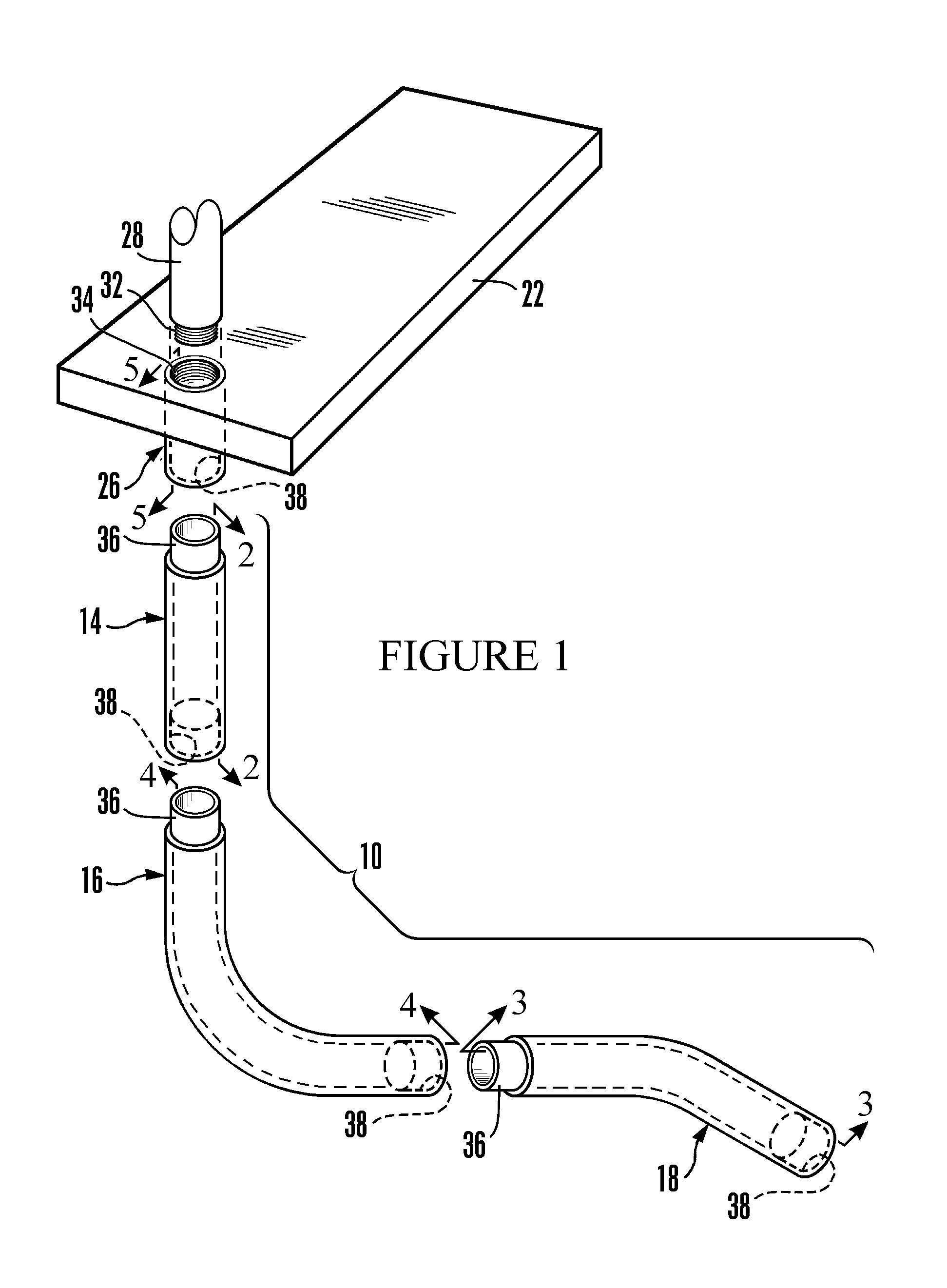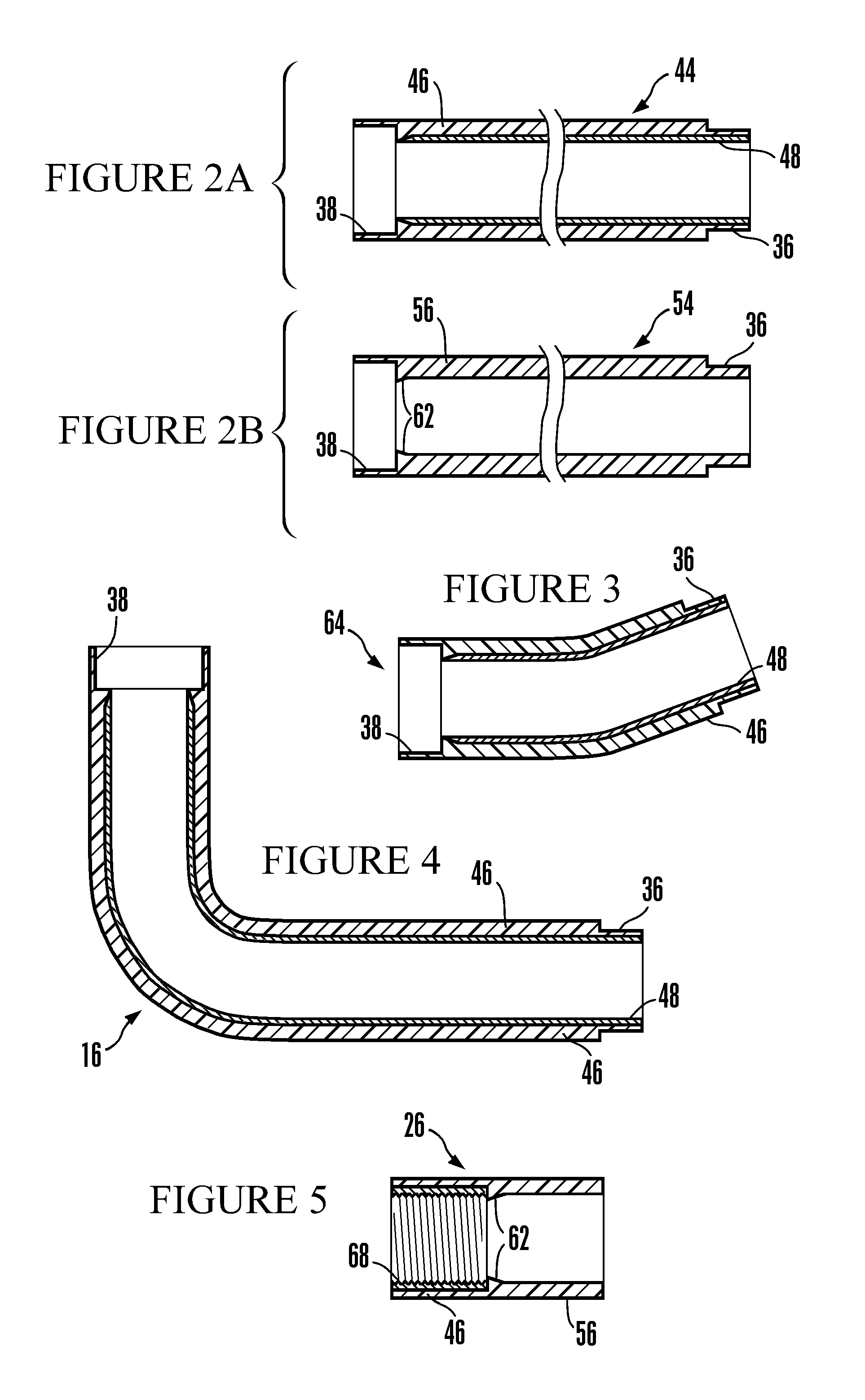Electrical conduit with internal lining
a technology of electrical conduits and raceways, applied in the direction of insulated conductors, coupling device connections, cables, etc., can solve the problems of adversely affecting the pulling process, and achieve the effects of less installation labor, less weight, and lower price per uni
- Summary
- Abstract
- Description
- Claims
- Application Information
AI Technical Summary
Benefits of technology
Problems solved by technology
Method used
Image
Examples
Embodiment Construction
[0020]Reference is now made to the drawings wherein like numerals refer to like parts throughout. In FIG. 1 an underground raceway 10 is schematically depicted, consisting of a plurality of individual raceway conduit members—the number and nature of individual conduit members dependent upon the specifications and requirements called out for a specific project or job. The underground raceway 10 of FIG. 1 includes a straight conduit 14, vertically arranged, a ninety-degree (90°) elbow 16, and a thirty-degree (30°) elbow 18. It is presently contemplated that these conduits of lesser bend might range from ten degrees (10°) to forty-five degrees (45°)—although degrees outside of this range are also considered within the scope of the present invention.
[0021]The underground raceway 10 is shown terminating in a concrete slab 22, such as a housekeeping slab for the placement of electrical equipment (not shown in the drawings). An adapter conduit 26 is provided to connect the underground race...
PUM
 Login to View More
Login to View More Abstract
Description
Claims
Application Information
 Login to View More
Login to View More - R&D
- Intellectual Property
- Life Sciences
- Materials
- Tech Scout
- Unparalleled Data Quality
- Higher Quality Content
- 60% Fewer Hallucinations
Browse by: Latest US Patents, China's latest patents, Technical Efficacy Thesaurus, Application Domain, Technology Topic, Popular Technical Reports.
© 2025 PatSnap. All rights reserved.Legal|Privacy policy|Modern Slavery Act Transparency Statement|Sitemap|About US| Contact US: help@patsnap.com



